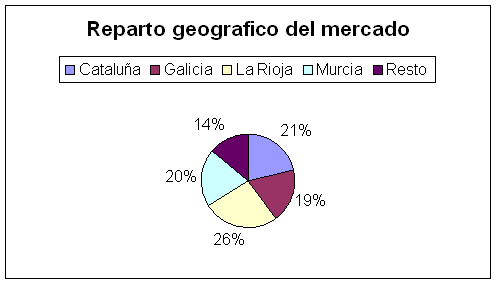

It includes almost a century and a half of quiet and efficient activity.
Now, at the beginning of the 21st century, it has little to do with its beginnings.
But it is not the purpose of this analysis to go into its story, whoever is curious to know something about it, I refer you to the work on it inserted in this Web This industry is a strong support for Spain to be one of the main producers of canned food, beverages and canned products of all kinds.
But in the present times, except for some particular sector of it, it does not enjoy favorable winds.
A huge variety of different types of packaging – glass, plastic, brik, paper, etc. – are challenging this type of packaging, which is, together with glass, the doyen of the sector.
It should be clarified that although this business includes products made using both tinplate and aluminum as raw material, in the case of Spain – which is not the same as in other countries – the former has a much more prominent weight than the latter (the reasons are various and are discussed in another article on this website), so the data handled here are preferably referred to the tinplate sector.
As it is a very mature product, it is characterized by a very competitive market, with very tight commercial margins and with a supply that is generally greater than the demand.
Another singularity is the atomization of its industrial plants.
The same company may have several factories distributed throughout Spain.
The main reason for this is the great influence of the cost of transporting the finished product on its final price -large volume and light weight goods-, making it very difficult to compete for supplies over long distances with other companies that are better positioned geographically.
The relative simplicity of their facilities also contributes to this industrial decentralization.
Today there are no major technological barriers to access this business, since equipment manufacturers facilitate the non-existence of such barriers.
The main impediments are financial – investments – especially in the beverage sector.
Professional know-how is developed and transmitted within the company itself; however, some companies work with foreign licenses or, being multinationals, have the technology of the parent company within their reach.
There are practically no external technical support offices for this industry.
The metal-graphic sector is in fact an auxiliary industry to the canning and packaging industry, but it also has other auxiliary industries, such as manufacturers of machinery and equipment, raw materials – tinplate, aluminum, inks and varnishes, composites, etc. – packaging, etc.
INDUSTRY MACRO FIGURES
According to the AME (Spanish Metallographic Association) – an association in which a good part of the companies in the sector participate – the approximate activity figures for this sector for the year 2005 are as follows: Number of companies: 43 Employees: 4935 Turnover: 1,298,000,000 euros Tinplate and TFS consumption: 647,485 Tons These figures do not include auxiliary companies (machinery, other raw materials, accessories…) These figures must be taken as approximate values because – as already mentioned – not all the companies are members of the AME and therefore a number of small companies are not included in these values.
For example, as detailed below, the actual number of companies exceeds one hundred, in addition to some thirty auxiliary companies.
The number of employees is also very relative, since the canning campaigns, especially those of vegetables, imply a temporary increase in activity.
This is solved by the sector by employing temporary labor, which is not usually reflected accurately in the statistical data.
It is normal for the number of temporary workers to be in the order of 30% or more of the permanent staff.
Of the aforementioned turnover, 79% was generated by the domestic market, the rest by exports.
The main receiving countries, in order of importance in terms of export value, are: France, Portugal, Morocco, USA and UK.
It is clear that the geographical proximity of the first three countries is decisive.
The distribution of the market in % at present, according to turnover, is as follows: Food packaging 46.5% ” for beverages 32.5% ” industrial 6.5% Metal caps and closures 7% Aerosols 4% Others 3.5% The consumption of tinplate and TFS by sector is quite close to the above percentage distribution, except for the case of beverages where half of the production is made in aluminum.
Aluminum consumption this year was in the order of 50,000 tons.
The top five companies in the sector account for 70% of the turnover, which gives an idea of the small size of the rest. MARKET SHARE AND LOCATION The metallurgical industry in Spain is mainly located in four geographical areas:
1st – CataloniaIndustrial packaging: This area is mainly concentrated in companies dedicated to industrial packaging, although other sectors are also present. There are manufacturers of packaging to contain: – Paints, varnishes and solvents. – Chemical products (drums) – Pharmaceutical and cosmetic products – Industrial oils and lubricants – Aerosols – Food – Capsules and crown corks – Beverages – Lithography and decorative packaging According to AME statistics by turnover (2004), among the top 50 Spanish companies in the sector there are thirteen Catalan companies and two more national companies with a plant in Catalonia. Together they represent 21% of the turnover of the national market. There are actually many more companies that do not appear in these data, either because they are not associated with the AME or because their turnover is small. The total number of them is approximately 33 (year 2006), although from one year to another there may be disappearances, takeovers or mergers among them. It should be clarified that we refer to manufacturing centers rather than companies, both in this case and in all those discussed in this analysis. It is common for a large company to have several plants in different places and therefore its presence in each of them is repeated. Of these Catalan companies, eleven are multinationals and the rest are established only in Catalonia. A large number of auxiliary companies are also concentrated in this area: – Machinery …………………………………….3 – Die-cutting, ……………………………………3 – Accessories (glands, caps, valves, etc.)……..2 and many of the raw materials: – Inks and varnishes………………………………..7 – Composite………………………………………1 – Aluminium………………………………………..1 The following table shows the above data in detail:
| THE METALWORKING INDUSTRY IN CATALONIA | ||
| SECTOR | Quantity among the 50 largest according to AME | Total quantity |
| Food | 6 | |
| Aluminum aerosols | 2 | 2 |
| Tinplate aerosols | 1 | 3 |
| Beverages | 1 | 1 |
| Drums | 2 | 2 |
| Capsules and Crown Cap | 2 | 6 |
| Decorative packaging | 1 | 2 |
| Industrial | 3 | 7 |
| Lithography | 1 | 2 |
| Aluminum tubes | 2 | 3 |
| TOTAL | 14 | 33 |
In general, it can be said that it is a varied market of moderate importance within the Spanish market as a whole. Galicia This is the region where the fish canning industries are located and therefore also the manufacturers of packaging for this use.
In fact, almost all the companies in the sector are dedicated to this activity, with a predominance of multinational or national companies established in the region as well as in other areas.
Of the nine firms that make up the market, four are multinationals and one is national.
According to the AME, six are among the top 50 in Spain.
Their share of the market represents 19% of total turnover.
The following table shows the distribution of the sector by type of company:
| THE METALWORKING INDUSTRY IN GALICIA | ||
| SECTOR | Quantity among the 50 largest according to AME | Total quantity |
| Tinplate fish containers | 2 | 4 |
| Tinplate containers for fish (factories with head office outside Galicia) | 2 | 2 |
| Aluminum fish containers | 1 | 2 |
| Aluminum tubes and containers | 1 | 1 |
| TOTAL | 6 | 9 |
It should be noted that it is in this region where the use of aluminum as a raw material has a good penetration.
Fish and beverages are the two segments of this market where aluminum has an important place, although inferior to tinplate.
In short, this is a region with a clear specialization – fish – with an absence of other applications.
3.- La Rioja
In fact, it includes the middle valley of the Ebro, an area of great agricultural potential and extends through the south of Navarra, La Rioja and the west of the province of Zaragoza.
Here the predominant sector is clearly the vegetable canning although there are some companies specialized in other activities such as: beverages, industrial, capsules, oils…
Proof of this is that 14 companies out of the total of 18 are dedicated to the manufacture of tinplate containers for canned food (not counting the companies dedicated to lithography, capsules or decorative or aluminum containers).
Three multinational companies are based in this area, some of them with more than one specialized manufacturing plant.
A leading national company in the canning packaging market is also strongly represented.
The rest are regional companies with a clearly family profile.
As a whole, the sector controls approximately 26% of the turnover of the national market, which gives an idea of its importance.
A breakdown of these industries by sector is shown in the following table:
| THE METALWORKING INDUSTRY IN LA RIOJA | ||
| SECTOR | No. among the 50 largest according to AME | Total market |
| Packaging for canned food. Regional manufacturers |
4 | 11 |
| Packaging for canned food. National manufacturers |
1 | 1 |
| Packaging for canned food. International manufacturers |
2 | 2 |
| Beverages | 1 | 1 |
| Lithography | 2 | 4 |
| Capsules | 3 | |
| Industrial | 1 | 1 |
| Oil | 1 | 1 |
| Aerosols | 1 | 1 |
| Lightweight aluminum containers | 1 | 1 |
| Decorative containers | 1 | |
| TOTAL | 14 | 27 |
The auxiliary industry is also well represented.
It is worth mentioning printing and varnishing with the presence of four companies, already reflected in the previous table, tinplate handling with a well-consolidated company in the market, closing and sealing equipment with two workshops, as well as others that also work with equipment for canneries.
In addition, there are two active companies that buy and sell second-hand machinery for the sector.
The future will probably bring about a concentration of the market in a smaller number of firms, either through the closure of some or the absorption of others.
This movement has been announced for a long time by the “futurologists” of the sector but it has not just happened, which says a lot in favor of the dynamism of this area, which always knows how to overcome difficulties and look for ways to continue its path.
4.- Murcia- Levante
The industry in this region is quite similar to that described for the area of La Rioja.
Here too, its main market is canned food and its specialization in this market is even stronger than in the previous case, since most of its plants are dedicated to this branch of the business.
The national leader in the manufacture of canning containers is based here, although its activity extends to other geographical areas into which we have divided the market.
Multinationals are also represented with two plants.
As a whole, this area may represent 20% of the national market.
When giving the market data, we only take into account the containers manufactured in the area, distributing in each geographical area the turnover of the companies that have different manufacturing plants, therefore the same is not accumulated where the head office is located.
The following table shows the distribution by plants and specializations:
| THE METALWORKING INDUSTRY IN MURCIA-LEVANTE | ||
| SECTOR | No. among the 50 largest according to AME | Total market |
| Packaging for canned food. Regional manufacturers |
2 | 7 |
| Packaging for canned food. National manufacturers |
2 | 2 |
| Packaging for canned food. International manufacturers |
1 | 2 |
| Lithography | 1 | 2 |
| Capsules | 1 | |
| Easy-open lids | 1 | 1 |
| General packaging | 1 | 2 |
| Decorative containers | 1 | 2 |
| TOTAL | 9 | 19 |
The presence of equipment and machinery manufacturers is important, representing a total of 6 companies, some of them with international importance 5º.- Rest The rest of the market, approximately 14 %, is distributed in turn in three preferential regions: Cantabrian Coast: With seven plants dedicated to fish, industrial and aluminum packaging.
In this area there is a strong tradition in the seaming and drying ovens market Central Zone: Mainly Madrid and its surroundings.
Eight companies dedicated to aluminum, beverage, industrial, crown cork and oil packaging make up the activity.
Extremadura-Western Andalusia: Seville is its main point.
Six plants working in beverage, canned food, capsules and oil packaging represent the sector, including several multinationals.
In summary, the geographical distribution of the market in Spain is shown in the following graph: 
Food alone accounts for half of the market (47%) and beverages for almost a third.
This leads to the apparent conclusion that the business is in the large sales volumes of these two sectors, but this is not the case, as we shall now see.
The following graph shows the number of plants -industrial facilities- dedicated to each of the different sectors in Spain.
As already indicated, this number does not coincide with the number of companies, since there are cases in which the same company has several plants in different parts of the peninsula.
We have preferred to express the industrial activity data by plants rather than by firms in order to give a more accurate idea of the market configuration.
No. of packaging manufacturing plants
Of the 102 factories, almost half – 43 – are for food, i.e. 47% of the market in this sector is very evenly distributed.
On the other hand, in the case of beverages, only 4 factories produce 33%.
It is clear that productivity in the second case is much higher.
Even taking into account that in the food industry there are probably no more than a dozen plants of a certain technical and productive level, the market/factory ratio is still worse than in beverages.
These figures only serve to highlight a well-known reality: the food market, the oldest of all, is highly fragmented.
The know-how and the means for this activity are within the reach of many.
On the other hand, in the beverage market, the youngest, there are serious barriers to entry.
If we add to this the stagnation in demand for food and, on the contrary, a continuous increase in consumption for beverages, we can see that the situation in both sectors is very different. The following graph shows the values of the ratio of turnover/no. of plants by sector.
The case of food packaging is similar to all the others, except for beverages.
OUTLOOK
The future that lies ahead for this industry is not an easy one.
Several circumstances make strong clouds threaten the economic climate to come.
Among others, we can highlight the following: – Atomization of the sector.
It results in difficulties to develop investments and major projects and in competition.
– Strong dependence on canning industries.
To the extent that they improve their domestic and export business, there will be new possibilities for metallographers.
But this task is not easy, Spain is surrounded by several countries that are real world powers both in food canning and in commercial distribution networks, which makes the increase of exports in this field complex.
– Difficulty in exporting empty containers.
Long distances are their great enemy and nullify their possible competitiveness in foreign markets.
Few plants are capable of placing goods outside our borders.
Northern factories and capsule manufacturers – where the transport factor is less important – are the best positioned.
– Strong competition from new types of packaging.
– Image.
The can has a somewhat traditional market image and food companies are making efforts to present their new products in more “modern” packaging systems.
All these considerations are valid for canned food packaging in general.
There are particular cases that need to be clarified, however: – In the fish sector, there is also a shortage of fish, although international competition may not be as strong.
– Beverages is a special case because demand remains strong and is far from suffering difficulties.
– Capsules has undergone a period of strong expansion with the arrival of new manufacturers in recent years.
This has led to competition that is beginning to take its toll.
– Aerosols went through a period of concentration of packaging by large companies in a few plants at the European level, with the result that the market at the national level has stagnated.
– Industrials has problems similar to those of the food market.
On the other hand, there are favorable factors, such as: – The incorporation of women into the labor market, with the resulting increase in the consumption of prepared foods.
– Increase in the variety of packaged foods.
– Growth of self-help domestic maintenance tasks (painting, DIY…) – Development of the consumption of canned soft drinks For all these reasons, we will continue to see important movements in the sector in the coming years. Back to Miscellaneous World Cans

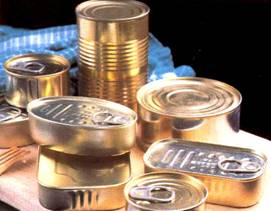


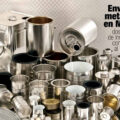
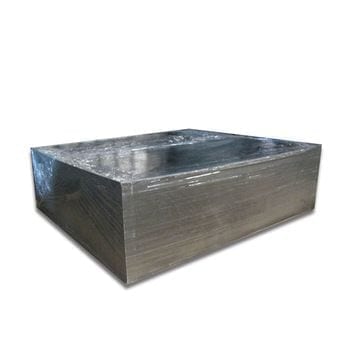



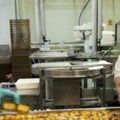






0 Comments